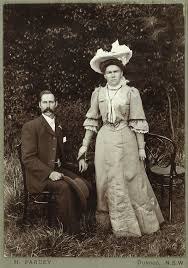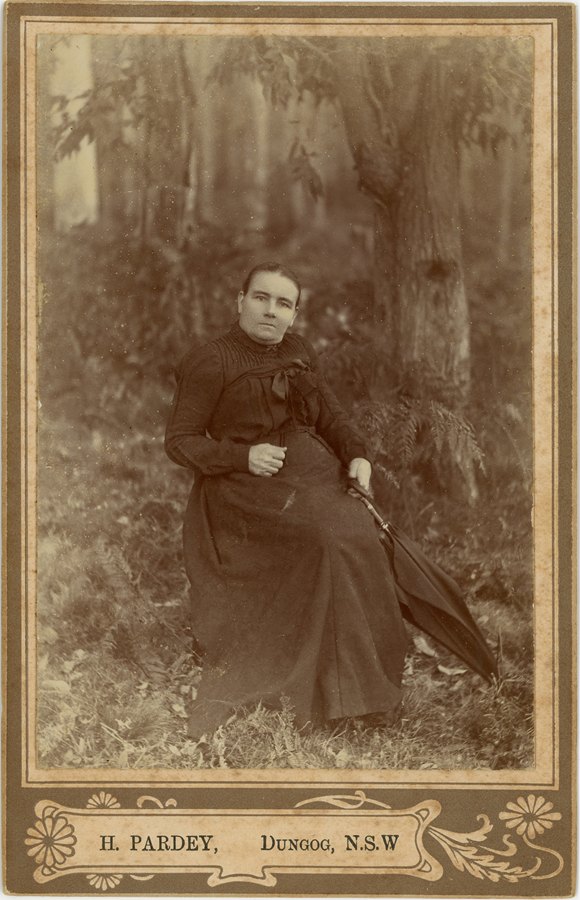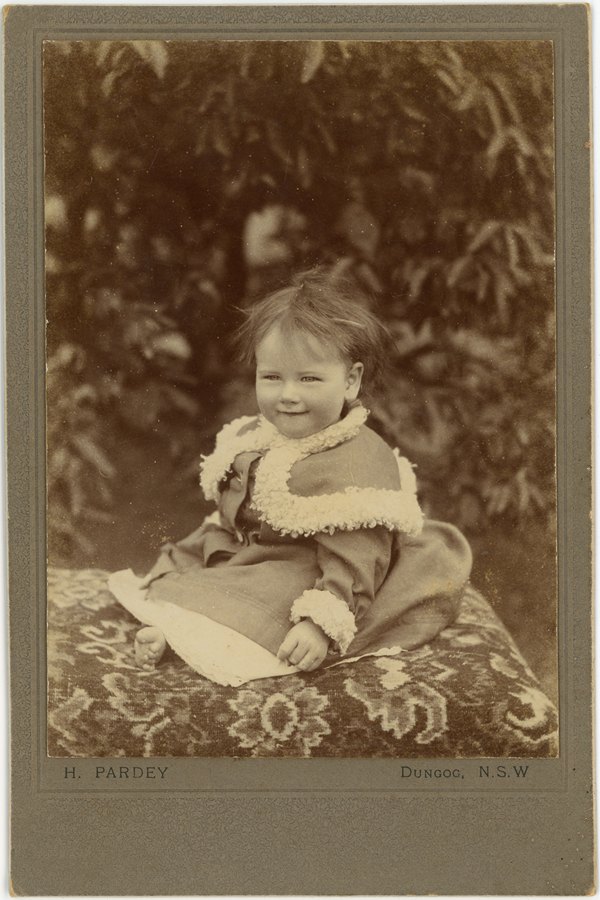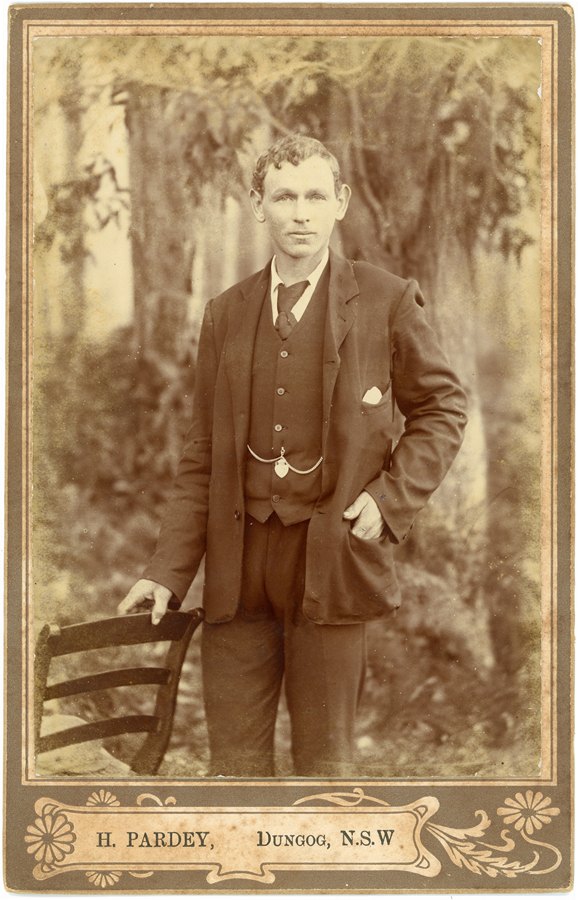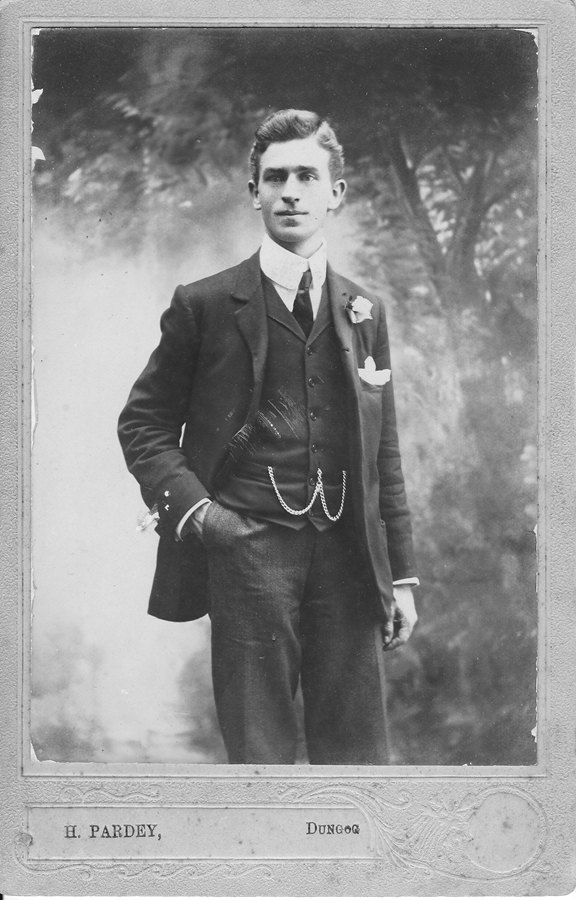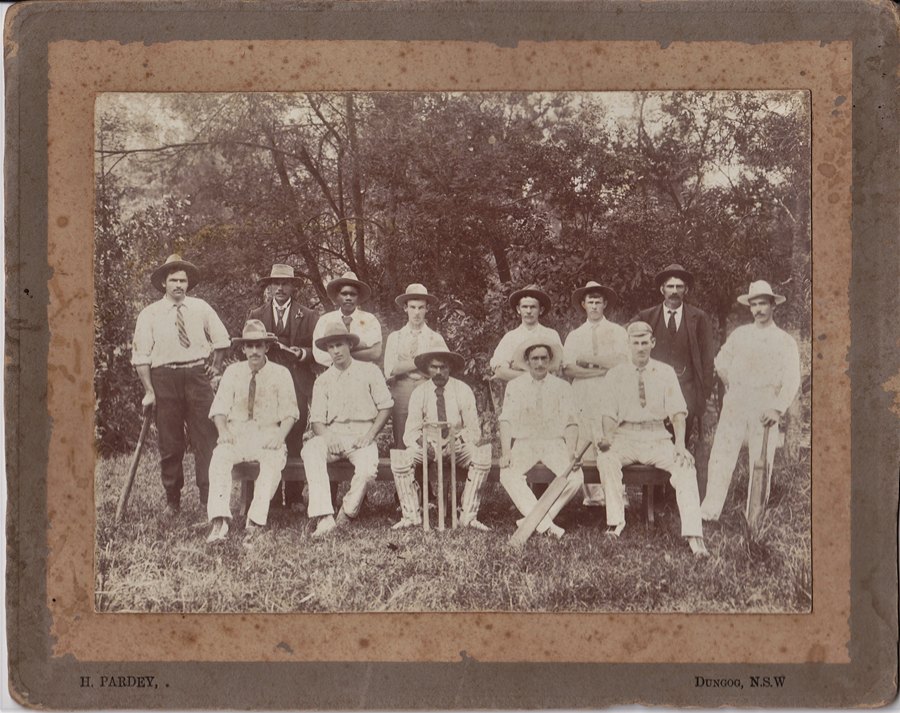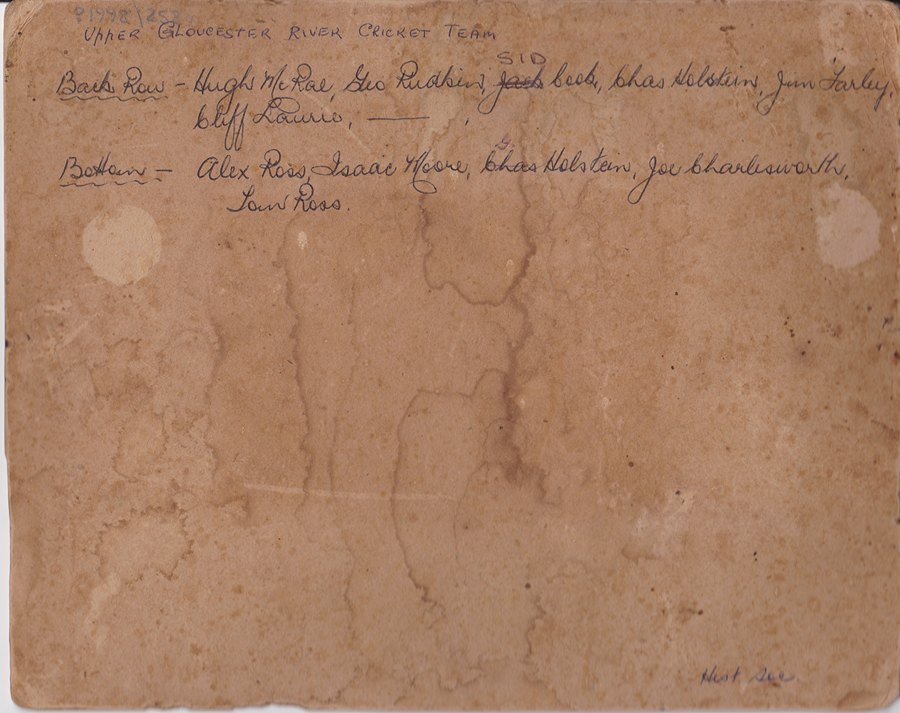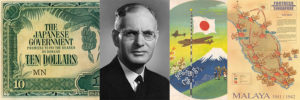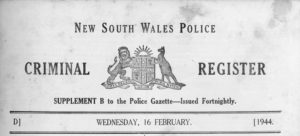In various parts of Australia in 2021, people are searching for information about a photographer named Herbert John Pardey. Some facts are known about him. It seems, for example, that he was born in Hackney (London) in 1875 and came to Australia via Melbourne (apparently on medical advice) in 1895. He is understood to have worked for a year as a jackaroo. It appears he married Susan Crowell in West Maitland in 1900. Susan was one of eight siblings and their family, having come out from England, settled at Weston in the Hunter coalfields where two of her brothers apparently died in a mining accident. Susan and Herbert had four children: Edith Alma (born in Greta in 1901), Eileen Jesse (born in Dungog in August 1902) Leonard Oake Pardey (born in Queensland in 1908), George Branch Pardey (born in Queensland in 1916). Edith Alma died of whooping cough on May 20, 1902, aged 17 months at Greta. [Thanks to Gresford reader Ivan Skaines for much of this information.]
Like a number of other prolific photographers of his era, Herbert Pardey moved around a lot. That means he left collections of photos and negatives behind in the places where he worked. As those caches of material have been discovered, an effort has begun to piece together his career and also to determine how much of the material is his work, and how much the work of others.
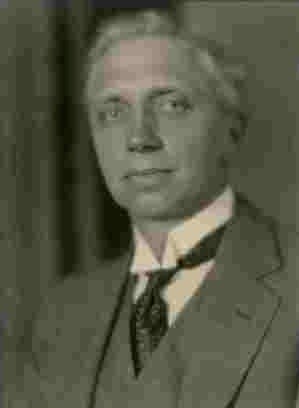
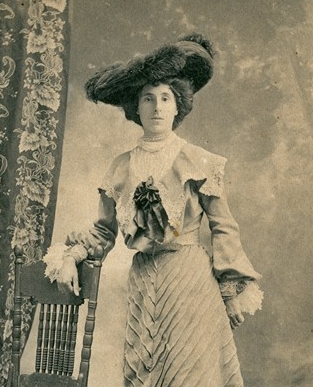
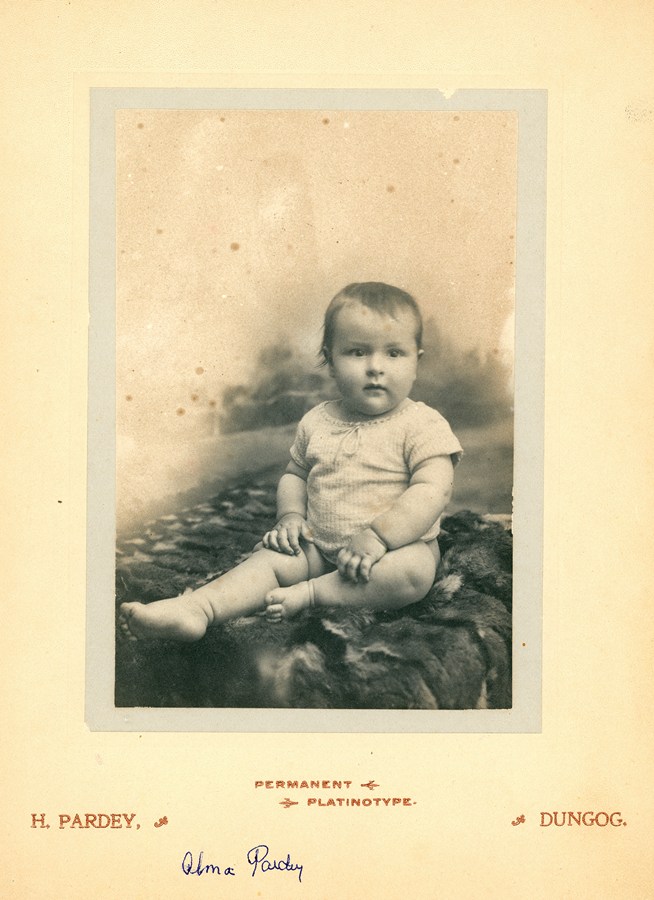
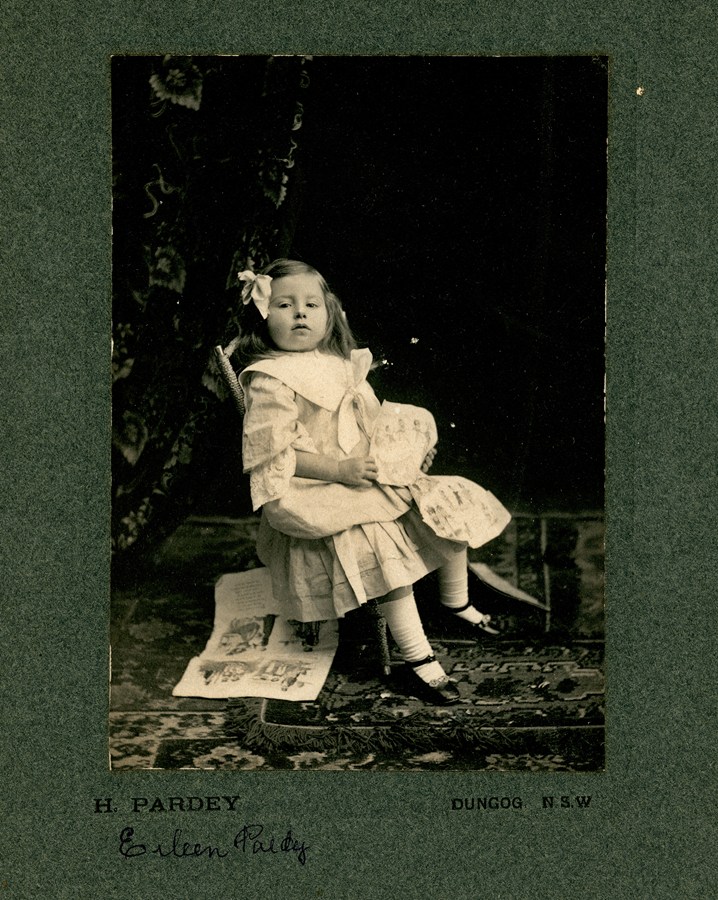
According to researcher Eric Victor, of the Queensland Centre for Photography, Pardey is known to have been working as a photographer at Pittsworth, Queensland, from about 1907 to about 1917. He is understood to have rented darkroom facilities from an amateur photographer named Lindenberg, whose family has been prominent in the Pittsworth business community for more than a century. Clive Lindenberg, who today owns a major car dealership in Pittsworth, is a custodian of some important Pardey plates, many of which he has permitted to be digitized.
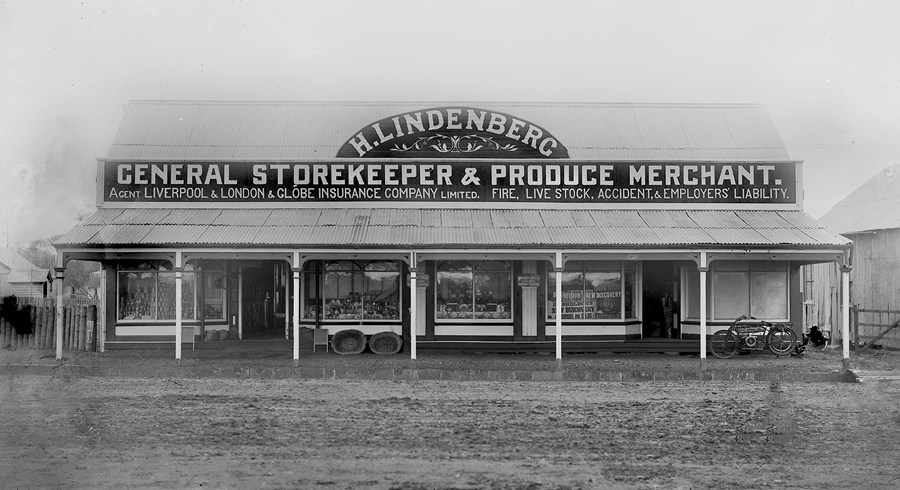
There is also a collection of about 700 of Pardey’s glass plates – found on the floor of his old darkroom in a cowshed – plus some other smaller collections with the Pittsworth Historical Society.
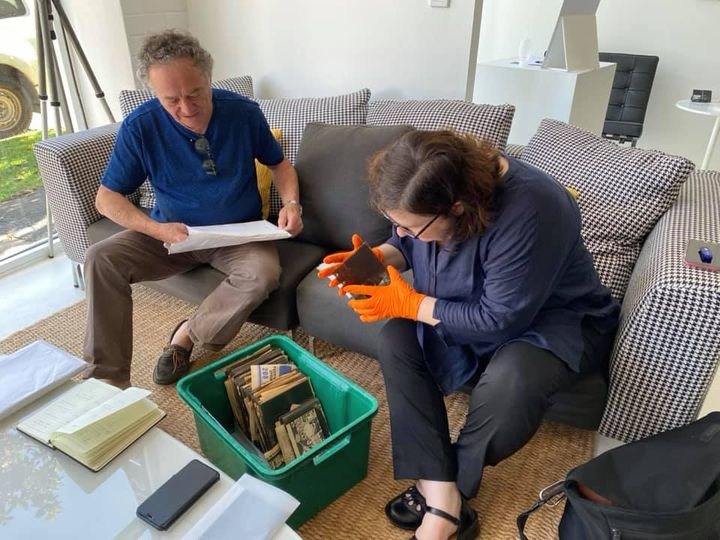
The Queensland Centre for Photography has been digitizing many Pardey plates and some of these can be seen on its Facebook page.
At present it is thought that Pardey moved from Pittsworth for health reasons and was next in Dungog, perhaps for a relatively short time, before moving to Sydney where he worked for 18 months as wholesale manager for Kodak subsidiary Harringtons.
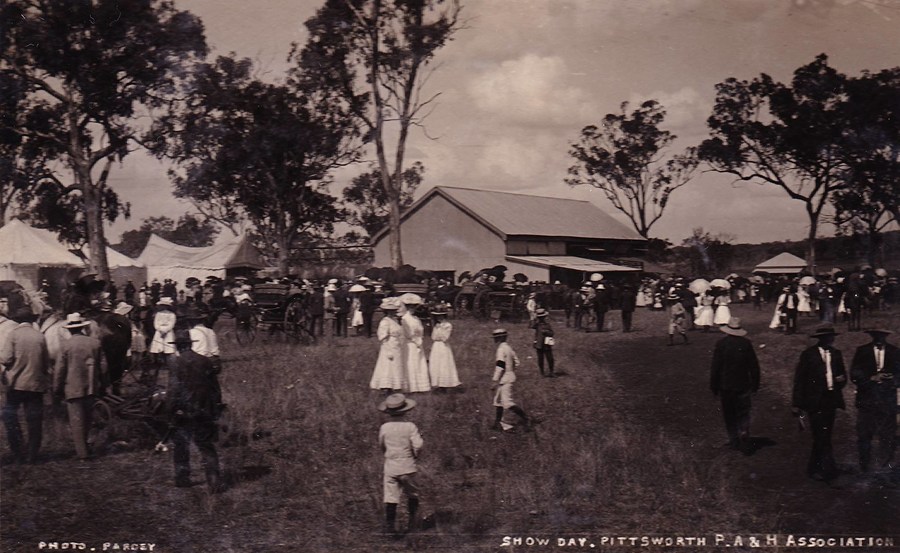
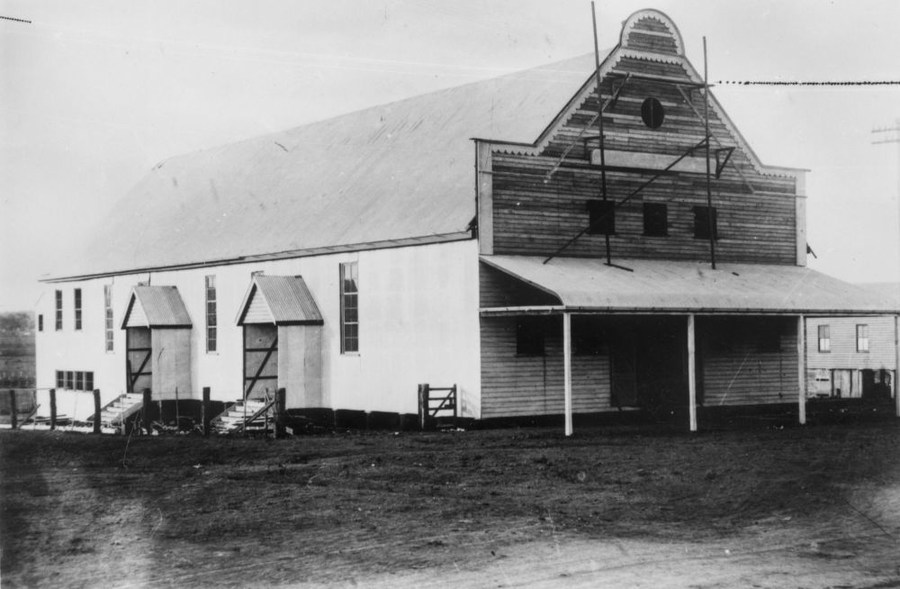
After his time at Kodak he moved to Cowra, NSW, where he bought an older photographic business. This business was apparently started in Kendall Street, Cowra, by a J.J. (James) Kelly in about 1897 and sold in about 1919 to a Mr and Mrs Craddock from Ararat, Victoria. According to Cowra Council’s grants and executive projects officer, Lawrance Ryan, Kelly moved to Bathurst, after holding a major disposal sale (at which Mr Ryan’s great uncle Arty Lowe bought one of Kelly’s old cameras and also acquired some Kelly glass negatives). According to an account by George Pardey (in a 1983 audio recording held by the National Library of Australia), his father and the Craddocks had both answered the same newspaper advertisement offering the Cowra studio for sale, with the Craddocks making a successful offer before Pardey was able to. The Craddocks, however, apparently promised to give Pardey first option if they decided to sell. Mrs Craddock apparently died suddenly shortly after the purchase, and Pardey moved to Cowra to take over, a week before the 1920 show.
H.J. Pardey bought the business from Craddock in 1920 and extensively remodelled the studio in 1926. When Herbert Pardey died in 1932, his daughter Eileen and sons George and Leonard kept the business going until George sold to Don Collins of Fletcher Fotographics. George credited his father and sister Eileen with teaching him what he knew of the business. It seems that Eileen – who never married – was deeply dedicated to the photographic business until she died in the studio, aged 69, in 1971. Her brother Leonard died a few years later, leaving George the sole proprietor of the business. In George’s account he relates that to begin with Eileen was the studio’s photographer, while George was the darkroom operator. Leonard did retouching, and Eileen supervised the girls who did the hand-colouring, where that was applicable.
George learned to take photos, at Eileen’s urging, in the mid-1940s when Cowra hosted a large military camp and prisoner of war camp, the firm took huge numbers of soldier portraits. George recollected being seconded by the military authorities to make a photographic record of the camp following the infamous breakout. He continued taking photos until Eileen’s death, when he reverted to framing and print sales.
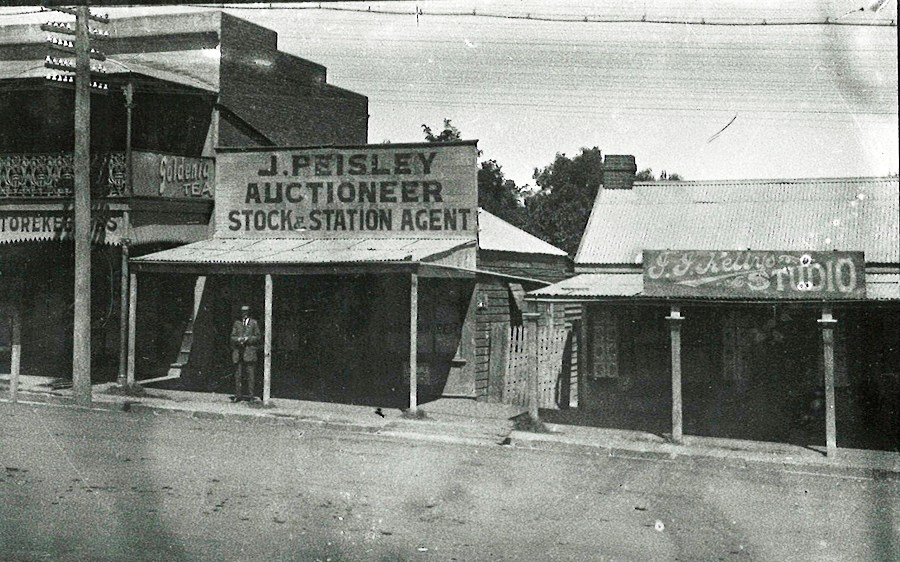
Typically, when photographers bought one anothers’ businesses, they acquired the negatives and other stock of their predecessors. Sometimes these were discarded but often they were kept. In the case of the Pardey studio in Cowra, the legacy is a collection of thousands of negatives of which a great many that almost certainly taken by or for the Kelly Studio before it was bought by the Pardeys. The total collection is understood to comprise about 80,000 negatives (mostly film) and to cover many incidents of Cowra’s local history including the infamous World War 2 “breakout” of Japanese prisoners of war from the local camp. Some of the images can be viewed here.
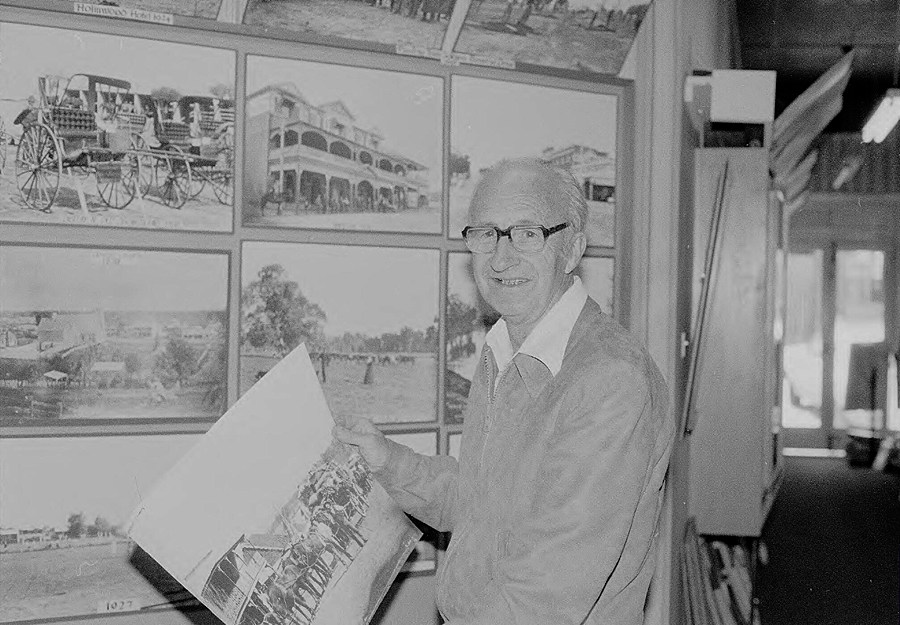
George Pardey died in 1987. To hear a National Library of Australia recording of George Pardey discussing the family’s photographic business, click here.
According to information on the Cowra Art Gallery website:
During his association with the business, George Pardey had maintained a register of the negatives. They were identified by number, date, and either the person who had ordered the photographs or to whom they were sent. The records consisted of a series of hard covered books, laboriously handwritten in pen and ink. (The biro pen was not available at that time). The registers in themselves are of historic value. At some point a (large) number of negatives were discarded on the local tip. Fortunately George realized the historic value of the negatives and instead attempted to save the remaining negatives for future generations. When George Pardey eventually sold the business to Don Collins of Fletcher’s Fotographics the negative collection was included in the sale. During the mid 1990s those negatives were made available to Cowra Family History Group to develop. With the aid of a three-year grant some 27,000 images were developed, mostly covering the period 1940 to 1971. As they were developed, all photographs were identified back to the registers, an enormous undertaking by group members. Members then methodically endeavored to identify subjects. Although very time-consuming, this task was possibly not as difficult as one would believe – one of the advantages of members and photograph subjects living their lives at the same time in the same small country town! The group has now placed all photographs into archival sleeves for optimum preservation. This has been made possible by a generous grant from the Royal Australian Historical Society and a donation from the Cowra RSL Sub-branch. Members also made a number of handwritten copies of the registers. For some time, this was the only index by which a search of the collection could be made. However, a searchable database is currently being modified to assist researchers to locate items of interest.
The Pardey family’s legacy is impressive, since Herbert and George preserved a vast number of old negatives that are now a precious resource for local history researchers.
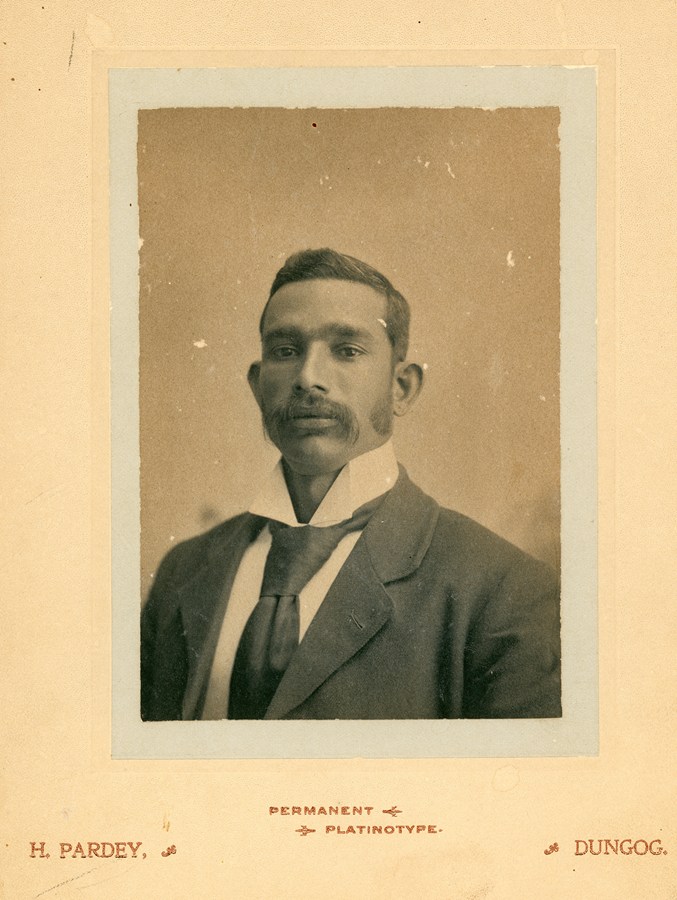
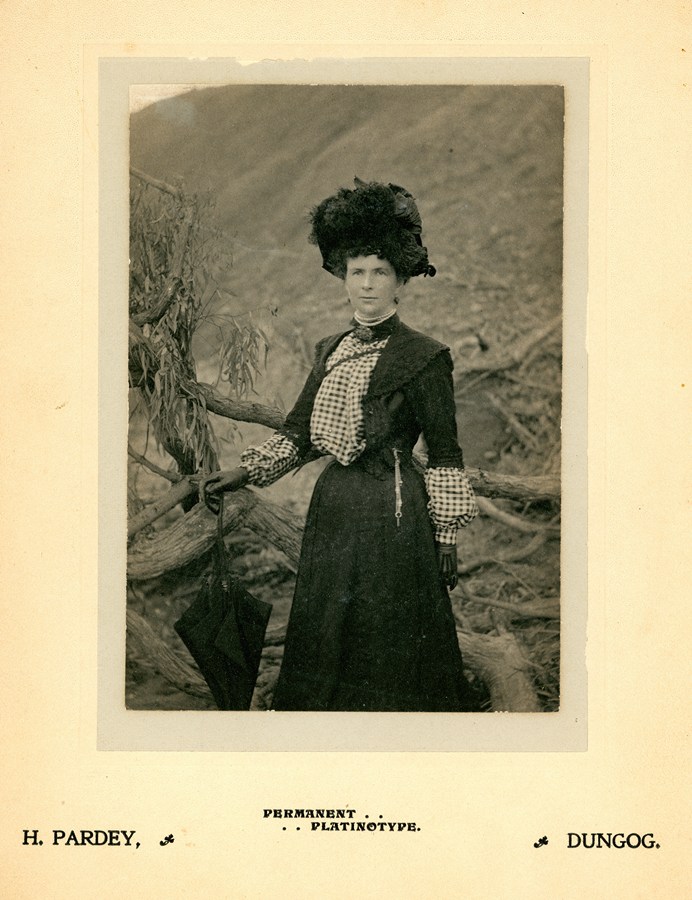
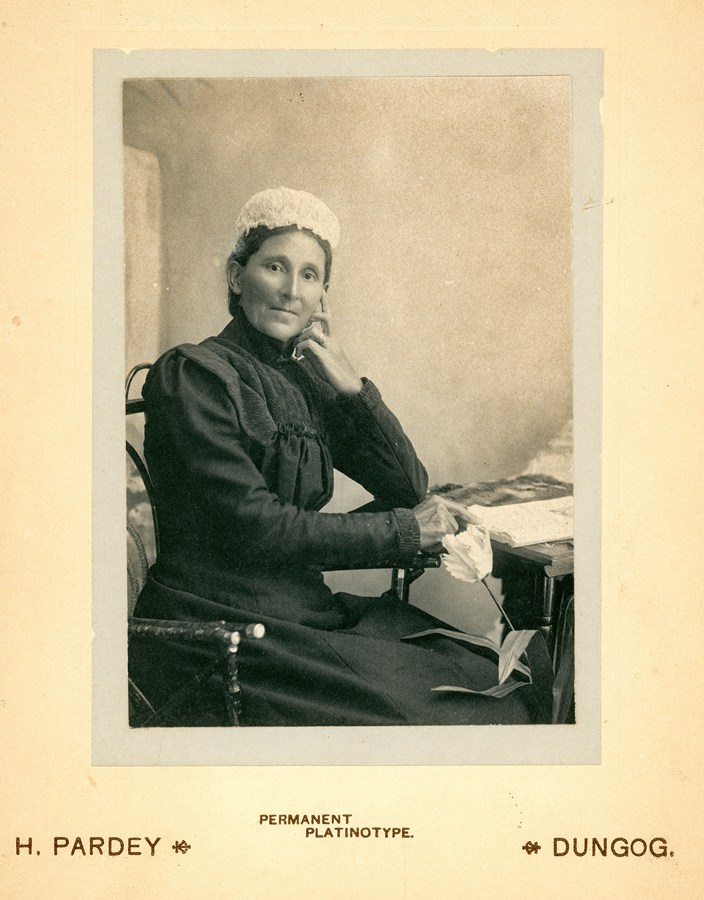
My interest is to learn something of the family’s stay in Dungog, where I have on occasion managed to find some prints with the Pardey stamp on them. The examples I have found are platinotype prints. This was a form of printing that used platinum salts instead of the more usual silver. The process is noted for its warm tones and great detail. It was largely phased out at about the time of the Great War, when platinum was needed for explosive manufacture.
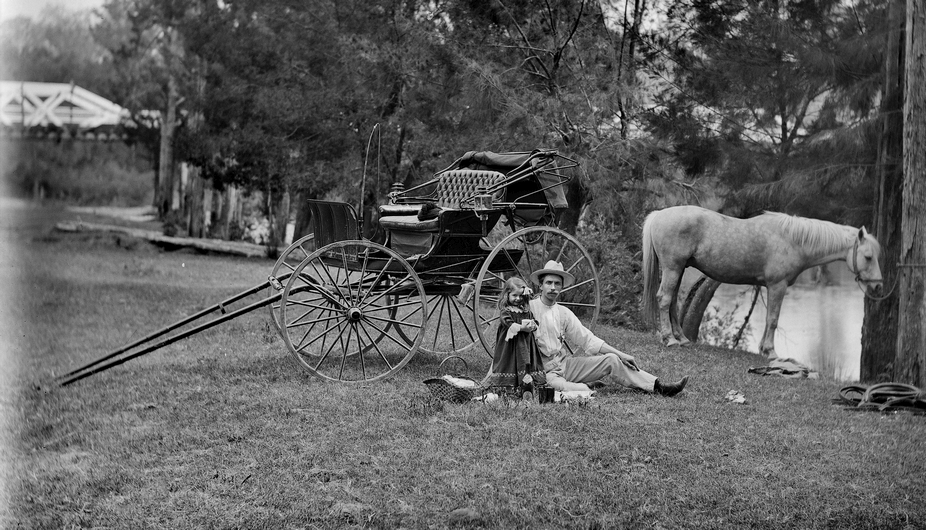
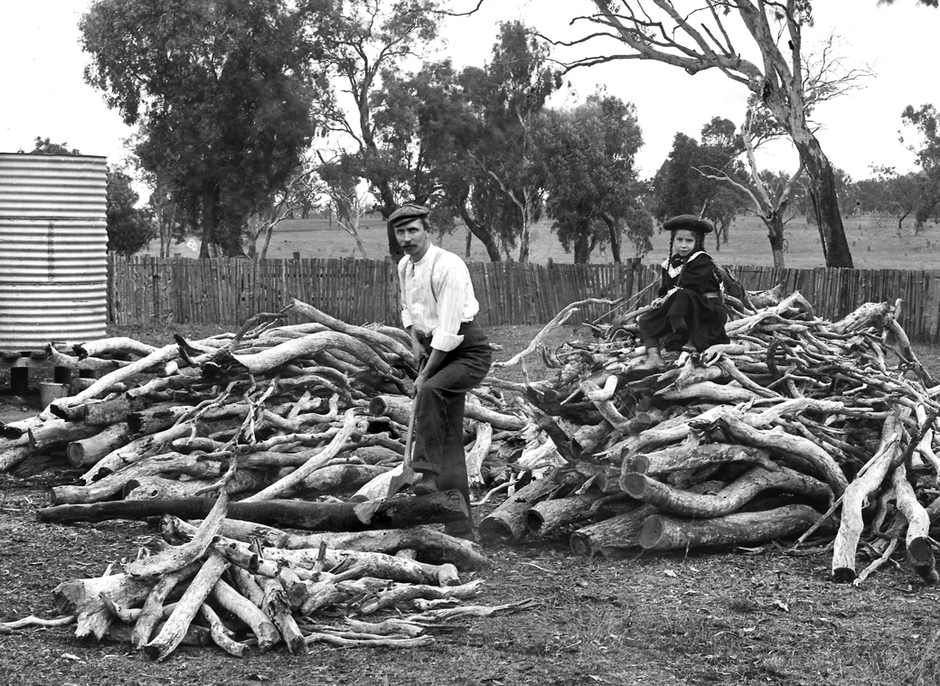
Many thanks to Gresford reader Ivan Skaines, who located a number of Pardey images in the extensive collections of the University of Newcastle, and also a portrait of an Indigenous man named Brandy, which is held in Dungog Museum. According to information on the museum’s Facebook page:
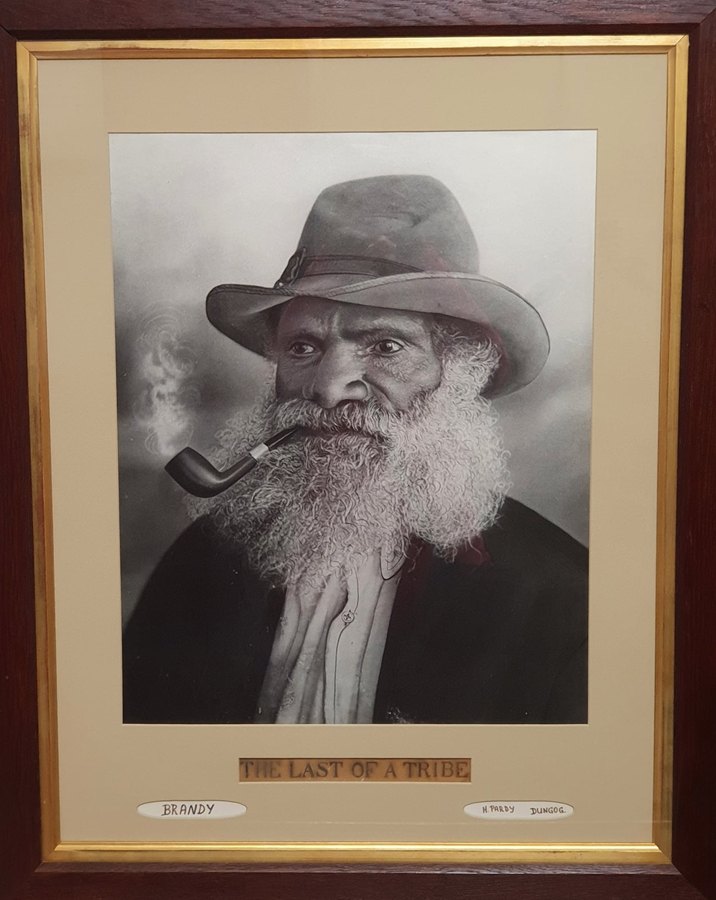
“Dungog Museum is custodian of a restored photograph of “Brandy” a local Gringai Dungog Aboriginal Elder who was born around 1829 at Tillegra, near Dungog. He lived most of his life at Dungog, but in about 1903 he moved to the Aboriginal Reserve at St. Clair. Before he left Dungog a professional photographer, H. Pardey took this photograph. Sometime after Brandy’s death in 1905 (aged about 74), Mr. J.K. Mackay gifted the photograph of Brandy [entitled “The Last of a Tribe”] to the School of Arts to preserve his memory. In 2012, Mrs Maureen Kingston, Secretary of the Dungog Historical Society Inc, oversaw the restoration of the photograph. The funding for the restoration was provided by the local IGA, Loveys. The black and white photograph of Brandy hangs in the main exhibition hall of the Dungog Museum.”
Brandy is mentioned in the book Pioneers of a Great Valley, by I.M. Simpson, who described him as “the last of his tribe”. “Brandy’s lubra was named Mary, who died at a rather early age, likewise his only son Eddie who passed out with inflammation of the bowels from eating green fruit.” “Brandy died in about 1902 [see above] and in his later years he lived at Hillside on Fosterton Road, the residence of William Alexander Smith (later occupied by Dr Ella McKellar McKinley) and came into Dungog daily touting for drinks from the clients of the Bank Hotel up to closing time and then he would finish up by lapping up all the stale beer from the drip trays. He would return to Hillside in the evenings drunk and it was Alex Smith’s job to take out his tea to a log in the backyard, light his fire and see that he had his blankets. He would sleep out in the coldest frost by the smouldering fire. He died during one of his walkabouts to Singleton and is buried at St Clair. Brandy was a colourful character who knew where to get a feed in the Dungog and Bandon Grove districts.”
